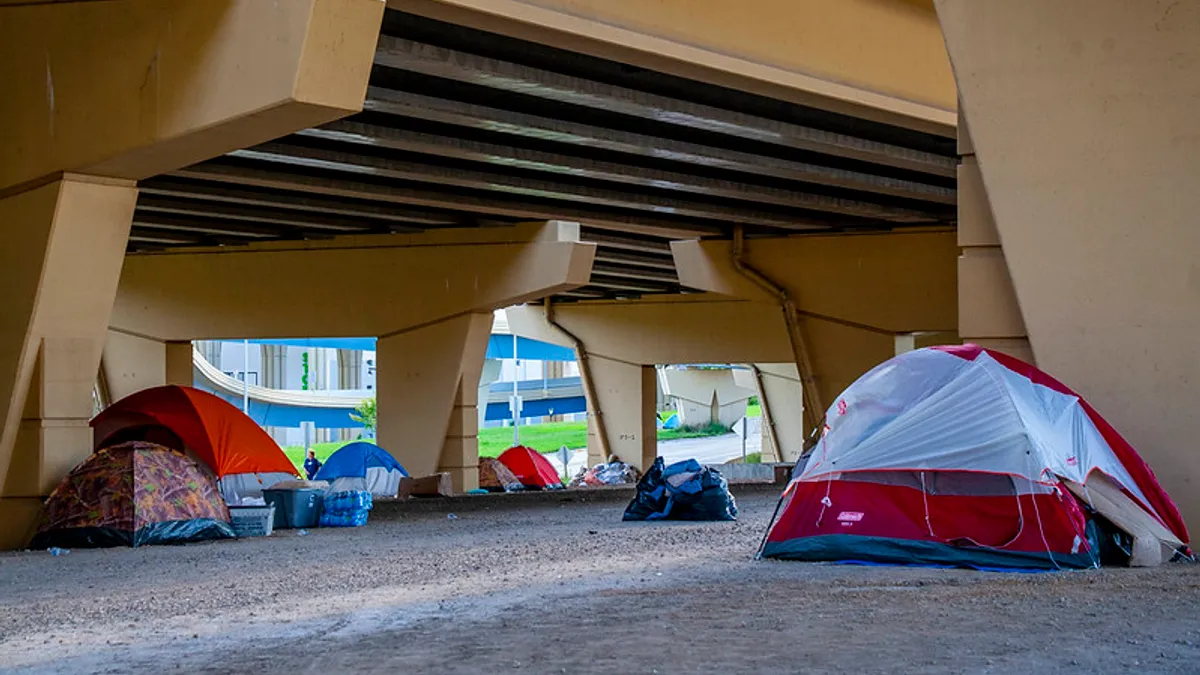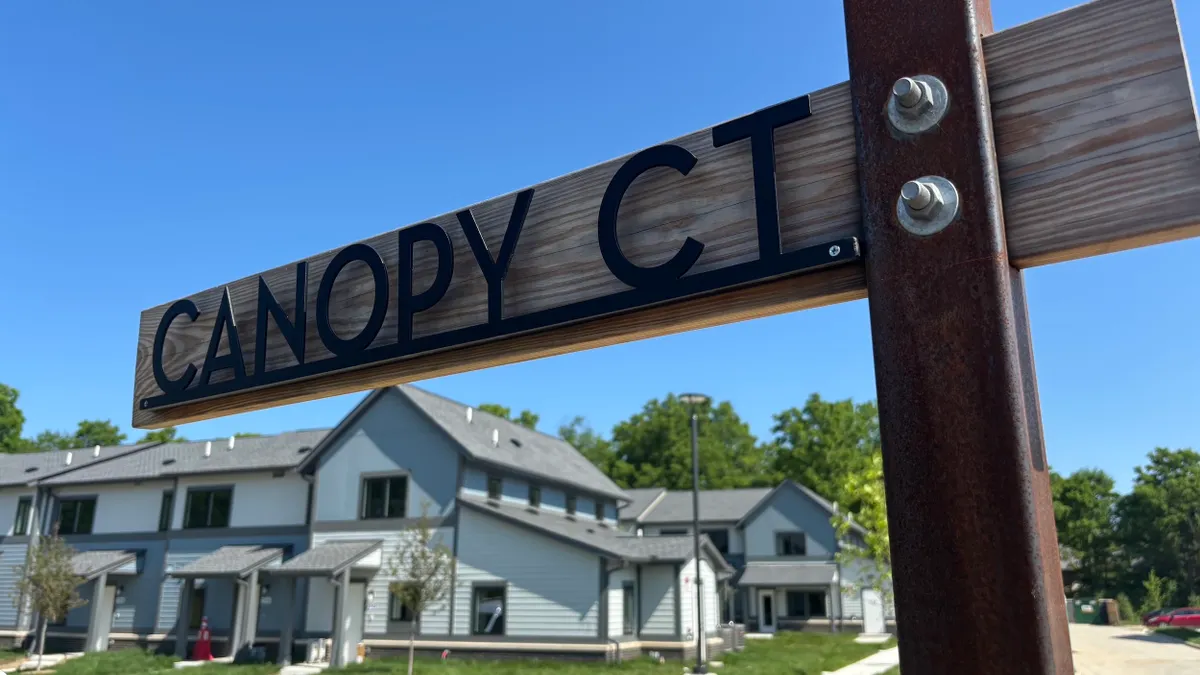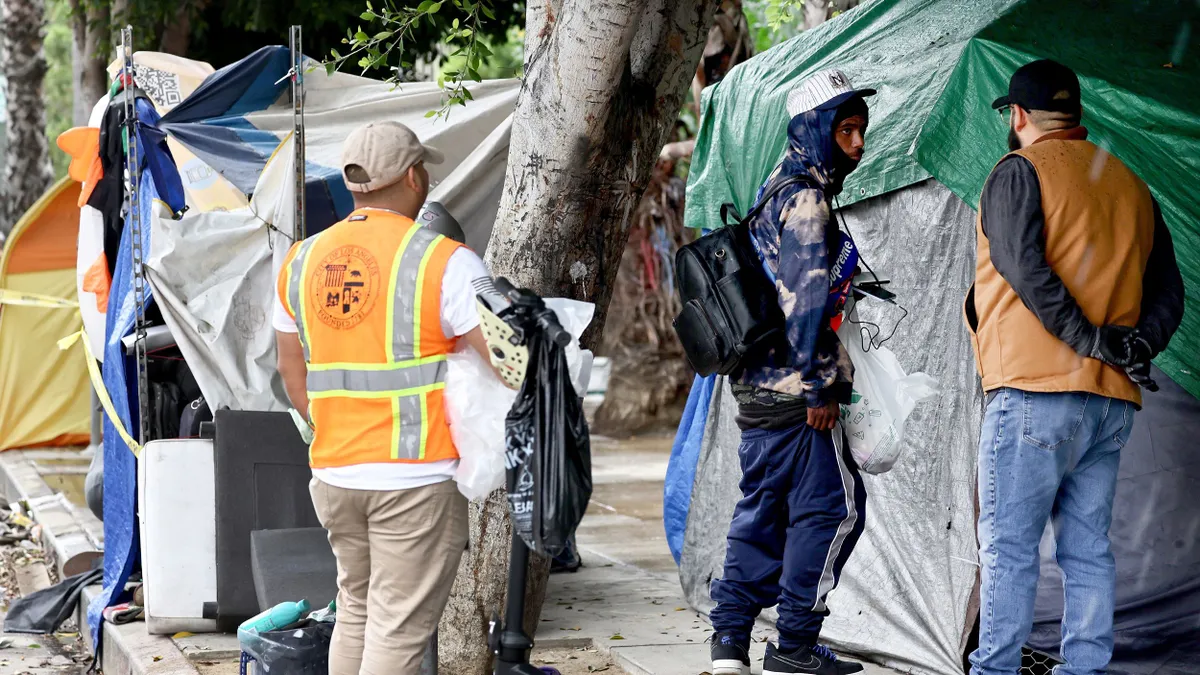Cities can help the real estate community address the worsening homelessness crisis through policies that encourage new development and units dedicated to serving vulnerable low-income tenants in addition to funding and providing support services for individuals who are homeless, said panelists on an Urban Land Institute webinar last week.
The webinar, featuring a real estate developer and a nonprofit that helps connect individuals experiencing homelessness to housing, was in support of ULI’s release of a new report on how the real estate sector can support people experiencing homelessness.
According to the U.S. Department of Housing and Urban Development’s 2021 point-in-time count, there were roughly 580,000 people in the U.S. experiencing homelessness during a single night in 2020. About 60% of them were staying in sheltered locations and 40% were unsheltered.
The lack of low-cost housing is a large and growing driver of homelessness, and the underproduction of housing, with supply shortages in the millions of units, underlies those challenges, said Leigh Ferguson, who recently retired as director of economic development for the Downtown Development District in New Orleans.
Social and supportive services play a critical role in serving homeless populations, Ferguson said. Various public policies, including zoning and housing density regulations, also are part of addressing the problem. But through increased production of housing, the real estate sector can provide homes for those currently unhoused and prevent other households from going homeless in the first place, he said.
“It is absolutely imperative that there be partnerships in each of our communities across the board, providing both the supportive services as well as the housing and the housing services, in order to sufficiently and successfully address this challenge,” Ferguson said.
The real estate industry needs to build and operate transitional housing and affordable housing, develop more housing models, promote more cost-effective solutions and look at different housing designs to make it more efficient and affordable, Ferguson said.
There are a large number of middle- and lower-income properties that are being taken off the market, bought by people who want to turn them into nicer and more expensive properties, said Philip Payne, chairman of the Charlotte, North Carolina-based nonprofit Lotus Campaign, which works to eradicate homelessness. Cities should create incentives for developers to keep those properties in the middle- and lower-income property brackets and incentives for owners of existing properties to make some of their units available to people who have experienced homelessness, he said.
“This generally involves getting over a group of myths about how the homeless are going to destroy their properties and affect other residents,” said Payne. “[It involves] coming up with a system of guarantees and incentives to say, ‘let’s open some units back up.’”
Building new units that are affordable to people in the lower income levels in danger of becoming homeless is “virtually impossible,” said Payne. But dedicating a small percentage of the influx of high-end condo units entering the market to the homeless population would make a dent, he said. It would “soak up some of that high-end demand,” opening up some of the other units for those with less money.
For cities, it is cheaper to assist people in existing units than to create government-built new units, said Payne. He cautioned that mandates such as inclusionary zoning sometimes backfire by not leading to more production; instead, they prompt developers to build elsewhere, he said. Offering subsidies and perks like expedited inspection, permit, or building modification approval process in return for the creation of dedicated units for people experiencing homelessness can be an effective method for cities.
The most important, but most difficult, real estate developments to construct are the ones dedicated to people experiencing homelessness, said Vicki Davis, managing partner and co-founder of the development company Urban Atlantic.
The company participates in Washington D.C.’s rapid-rehousing program: It builds housing developments in which every building owner is required to accept the housing subsidies provided to homeless individuals. The program comes with its challenges, Davis said, since the building owner does not necessarily have the needed supportive services for those individuals.
People who are chronically homeless require more permanent, supportive care to assist those who may never really be able to live on their own or get re-established in the community, Payne said.
Emergency crisis assistance programs can also help those who are in imminent danger to becoming homeless due to a life crisis such as an injury, lack of work or being fired or laid off unexpectedly.
“Being able to step up and help them through that temporary period would be a great way to reduce homelessness because we’ve got to stop the inflow if we’re ever going to deal with this,” said Payne.
But communities also need to encourage the production of housing units of all kinds.
While evictions paused temporarily during the COVID-19 pandemic, a large number of people fell behind on their rent in the past two years, meaning there will soon be a “hell of a wave of homelessness,” Davis predicted.
“It is going to be terrible in the next couple of years because we have a lot of people who didn’t pay, and there’s going to be a whole new definition of homelessness because landlords are not likely going to take people who do not pay their rent as a general concept,” said Davis.
It will be incumbent upon the real estate sector, in coordination with local and federal governments, and service providers, to address the problem, she said.



















